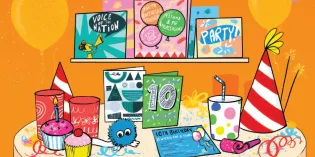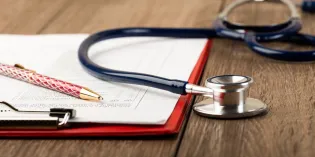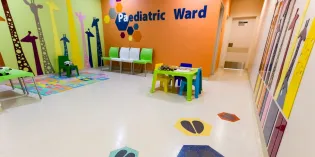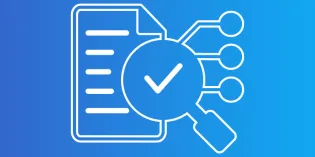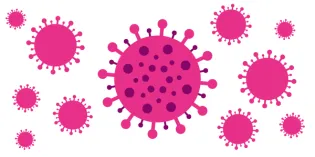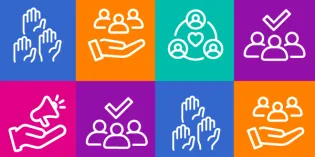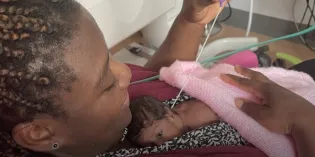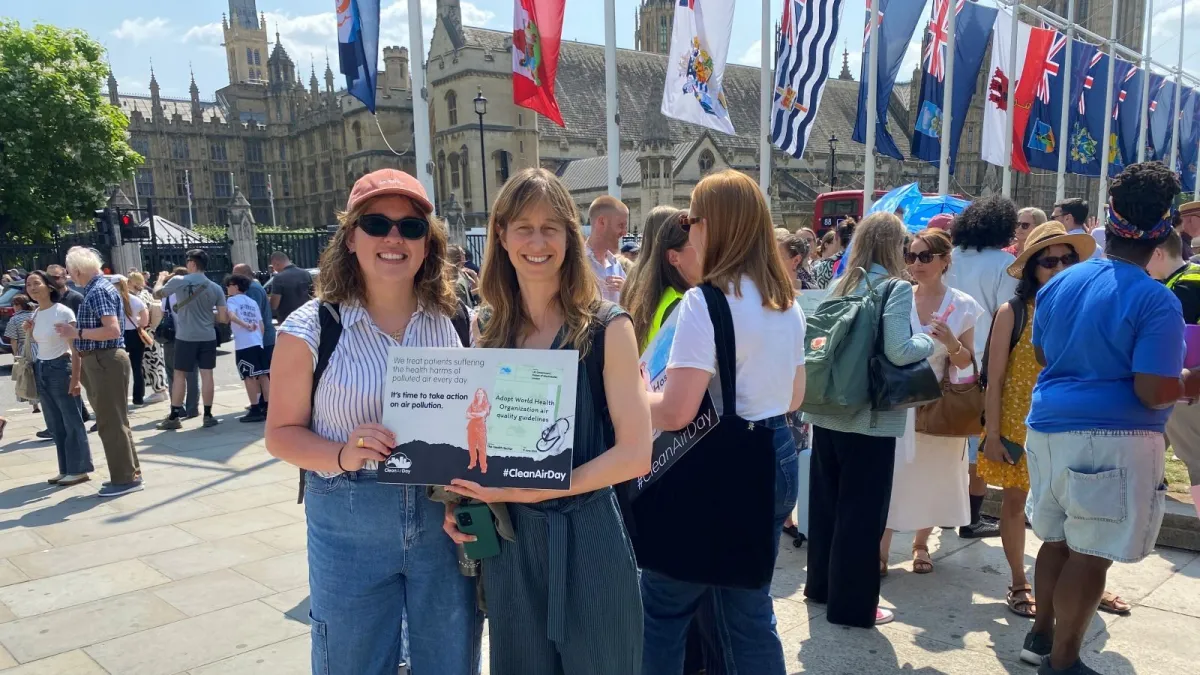
When I stepped into managing the climate change and clean air programme of work at the College, I knew air pollution mattered for child health but I had no idea just how deeply.
I didn’t know that air pollution is now the second leading risk factor for death in children under five, both globally and here in the UK and I didn’t know just how profoundly exposure in childhood shapes health across a lifetime. And, while I already understood the deep inequities that shape child health, I hadn’t realised how sharply they played out in the context of air pollution. The children and families contributing the least are often those breathing the worst air and facing the highest health burdens.
As one young person involved in our project put it:
Clean air is not a privilege - it is a right we all deserve for our health and our future
The more I learned, the more I become frustrated by just how preventable so much of this harm is. At the same time, I found myself increasingly inspired by the people around me: our dedicated and extremely knowledgeable team at the RCPCH (Zara, Harry, Alice, Emily, Georgia, Helena and Alison), the passionate clinicians who form part of our Clean Air Network and relentlessly advocate for their patients, as well as colleagues across the sector - from grass-roots advocacy groups to fellow Colleges, hospitals, researchers, local authorities and, of course, children and young people themselves.
Here's a snapshot of what we at the College have done over the past few years:
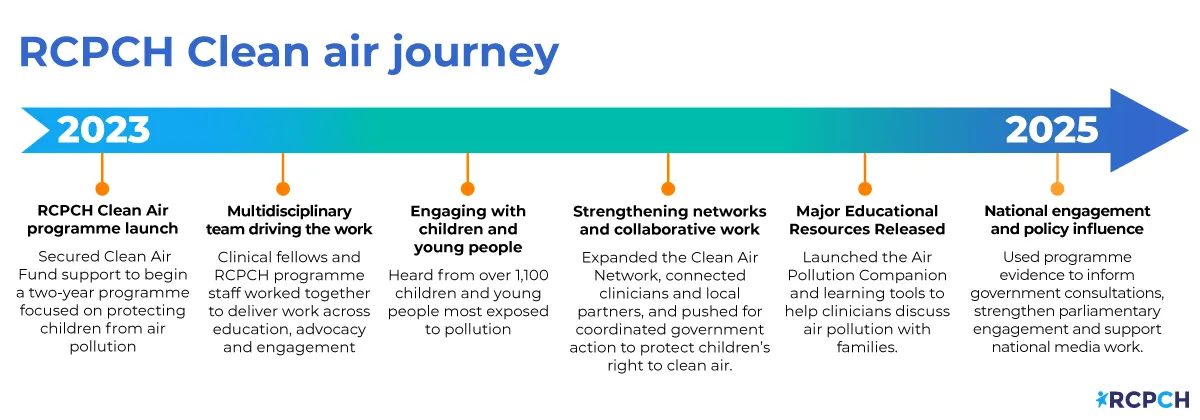
Some key project achievements
For many families, these issues are not abstract. The story of Ella Kissi-Debrah, who died in 2013 following exposure to excessive air pollution in south-east London, shifted the national conversation. This prompted the European Academy of Paediatrics to state that failing to disclose pollution risk makes paediatricians complicit in an ongoing mass breach of children’s rights, making the urgency clear.
Yet, even with growing awareness, many healthcare professionals told us they wanted to do more but weren’t sure where to start. And this is where our project has made real, tangible difference. Looking back over the last two years, it’s been incredible to be part of a programme of work that has genuinely shifted the landscape.
1. We have protected children’s health and influenced national policy
We helped raise air pollution up the political agenda as both a major public health threat and a child rights issue through:
- cross-sector coalition work via the Healthy Air Coalition
- hearing the views of over 1,100 children and young people living in the most polluted and disadvantaged communities
- publishing our Clean Air: Healthy Childhoods report and an updated air pollution position statement, and subsequently using these recommendations to respond to government consultations, respond to media enquiries and directly engage with parliamentarians both nationally and locally.
We welcomed the expansion of Awaab’s Law and continue to call for coordinated government action – from strongly calling for national legislation such as the re-introduction of the Clean Air (Human Rights) Bill this autumn to working with local authorities to enforce existing protections.

2. We have equipped the paediatric and healthcare workforce
We developed practical, accessible tools to help clinicians confidently talk to families about air pollution and housing conditions.
This includes:
- launching our Air Pollution Companion, a one-stop educational hub accessed by up to 5,700 healthcare professionals
- creating patient simulation videos and accompanying eLearning about how to talk to patients about air pollution with Great Ormond Street Hospital and Camden Council
- working with RCPCH&Us with children and young people to produce resources for clinicians – including an open invitation asking that they are educated about this
- delivering national webinars, conference sessions and targeted teaching sessions – with slide packs for clinicians to use for their own sessions
- sharing case studies from pioneering specialist Clean Air Clinics in London and Liverpool.
3. We have built a clean air community
One of our most meaningful achievements has been bringing the right people together: paediatricians, the wider healthcare workforce, public health teams, local authorities, housing professionals, researchers, children and young people and international partners.
It is our hope that this community now feels better connected, better informed, and more able to drive long-term change well beyond the life of this project.
The role of government and where we go next
As my colleagues in the Health Policy team take this work forward as part of business as usual, we continue to reiterate: no clinician, no family and no local authority can fix this alone.
Real progress requires coordinated government action, including:
- the introduction of a clean air act that includes legally binding clean air targets based on the best available health evidence
- monitoring and protections for every child at school
- enforceable indoor air quality standards
- sustained funding for councils to act on pollution and poor housing.
Families should not have to fight for the right to breathe clean air. The system must protect them before harm occurs.
Clean air is not optional. It is a basic human right.


